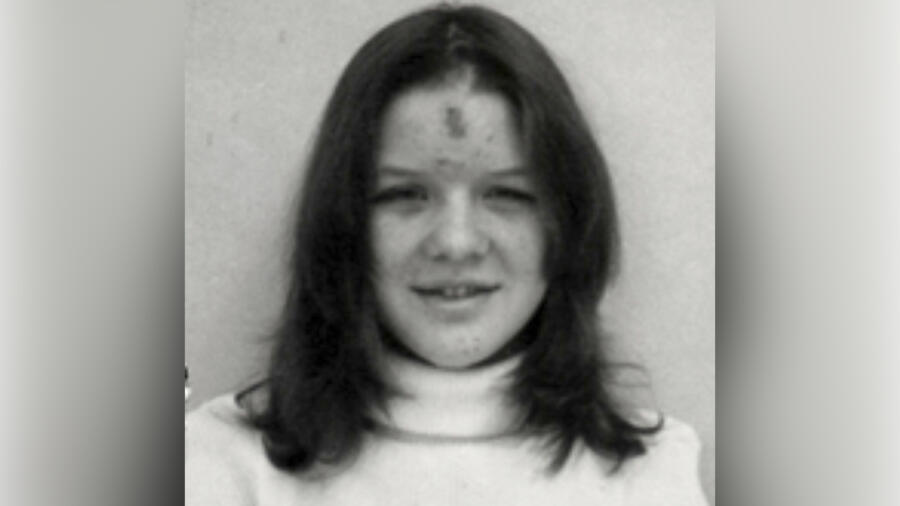For 38 long years, the disappearance and murder of Janie Landers haunted her family, faded from headlines, and sat buried in a cold case file. But in 2017, a microscopic detail—and a relentless detective—finally brought the truth to light. Her story is a powerful reminder of why cold cases matter, and how small clues can unlock unimaginable truths.
A Vanishing Ignored: How Janie Landers Disappeared
On March 9, 1979, 18-year-old Janie Landers walked away from the Fairview Training Center in Salem, Oregon. Known for housing individuals with developmental disabilities, Fairview had a troubled past and a reputation for strict rules and questionable care.
Janie, who had the mental capacity of an 8-year-old, had occasionally wandered before—but had always come back.
This time, she didn’t.
Suspicion, Silence, and a Gold Car
Witness Leona Wase, a Fairview employee, recalled seeing Janie talking to a middle-aged man near a gold-colored car. He looked out of place—pot-bellied, shaggy hair, unsettling energy. Wase remembered it vividly, but Fairview’s policy prohibited staff from engaging with residents off campus.
Her gut told her something was wrong. She said nothing.
Five days later, Janie’s body was found, savagely stabbed and discarded in a brush-covered field. Her killer had left no fingerprints. No clear motive. No suspect.
Except one.
Early Suspects, Dead Ends, and a Sister’s Grief
Authorities initially honed in on Bill Graf, one of Janie’s counselors. He fit the eyewitness description. But he passed a polygraph. No physical evidence connected him to the crime.
Another lead pointed to a young man named Ray, who had a tense history with Janie. Months before, Janie had allegedly poured hot chili on his girlfriend. He vowed revenge. But again, the case stalled.
Despite Janie being found clutching a clump of someone else’s hair, the technology to analyze it simply didn’t exist at the time.
The case went cold.
The Tiny Detail That Changed Everything
In 2015, Janie’s sister Joyce Caldwell wrote to investigators, pleading with them to reexamine the case. Detective Steve Hinkle answered the call. While reviewing the photos, he noticed something critical:
The stab wounds lacked a hilt mark—meaning the knife likely didn’t have a guard. That would’ve caused the killer’s hand to slip down the blade.
He might’ve cut himself during the attack.
If he bled, his DNA might still be on Janie’s clothes.
DNA Technology Unlocks the Truth
Janie’s clothing was resubmitted for testing using advanced forensic methods. On it, analysts found trace DNA not belonging to Janie. The profile was uploaded to CODIS.
It matched Gerald Dunlap.
At first, his name meant nothing. Then detectives unearthed his past.
- 1961: Convicted of rape in Tennessee—sentenced to 99 years
- 1973: Paroled after just 12 years
- 1970s: Moved to Oregon
- 1979: Employed at Fairview Training Center—in the laundry department
Unbelievably, no background check had been conducted before his hiring.
The Monster Hidden in the System
Dunlap had access to Fairview’s most vulnerable residents. No one questioned him. No red flags were raised.
Wase, shown a photo of Dunlap decades later, instantly recognized him as the man with Janie that day.
Unfortunately, Dunlap died in prison in 2002, serving time for the sexual abuse of a child in his own family. Justice had come far too late. But thanks to DNA, the truth was finally undeniable.
A Sister’s Closure, A System’s Failure
For Janie’s sister Joyce, the answers brought bittersweet closure.
“I’m glad we know now,” she said. “But it should never have happened in the first place.”
The justice system failed Janie twice: once by releasing a violent predator, and again by letting him work in a state facility filled with people like her—vulnerable, dependent, and often voiceless.
FAQs
Who was Janie Landers?
An 18-year-old woman with developmental disabilities who lived at the Fairview Training Center in Salem, Oregon.
When did she go missing?
She disappeared on March 9, 1979, and her body was discovered five days later.
How was her killer identified?
Through advanced DNA analysis of blood found on her clothing in 2015, which matched convicted rapist Gerald Dunlap.
Was anyone prosecuted?
No. Gerald Dunlap had died in prison in 2002 before the DNA match was made.
What role did Fairview Training Center play in the case?
Dunlap was employed there despite his criminal record. The facility failed to vet him, putting residents at risk.
How long did it take to solve the case?
38 years passed between Janie’s murder and the identification of her killer.

